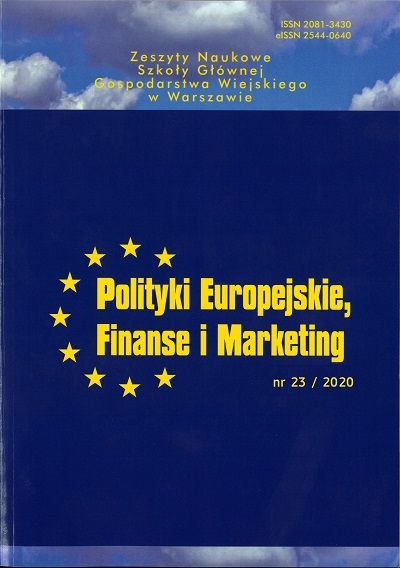Main Article Content
Article Details
Barczyk R., 2004: Teoria i praktyka polityki antycyklicznej, AE, Poznań, s.16.
Blanchard O., 2011: Makroekonomia, Oficyna Wolters Kluwer, Warszawa, s. 849.
Cassel D., Thieme H.J., 1997: Einkommenspolitik Kritische. Analyse eines umstrittenem stabilitätspolitischen Konzepts, Kiepenheuer and Witsch, Kőln, s. 96.
Despres E., Friedman M., Hart A.G., Samuelson S.A., Wallace D.W., 1975: Problem niestabilności gospodarczej, w: Teoria i polityka stabilizacji koniunktury. Wybór tekstów, PWN, Warszawa, s. 41-42.
Hansen A.H., 1949: Economic Policy and Full Employment, New York, s. 248-249.
Hübner D., Lubiński M., 1988: Współczesny cykl koniunkturalny, Warszawa, s. 192-193. Kołodko G.W., 1993: Kwadratura pięciokąta. Od załamania gospodarczego do trwałego wzrostu, Poltex, Warszawa, s.46.
Kropiwnicki J., 1976: Teoria automatycznych stabilizatorów koniunktury, Warszawa, s. 143. Krugman P., Wells R., 2012: Makroekoonmia, Wyd. Naukowe PWN Warszawa, s. 357-361, 372-377.
Laffer A., 1981: The New Economics. A Debate „Economic Impact”, No 3.
Mussel G., Pätzold J., 2012: Grundfragen der Wirtschaftspolitik, 8-th ed. Vahlen, München, s. 22. (Crossref)
Nasiłowski M., 1996: System rynkowy. Problemy mikro- i makroekonomii, Warszawa, s. 209.
Owsiak S., 2017: Finanse publiczne. Współczesne ujęcie, PWN, Warszawa, s. 489-490. Pätzold J., 1991: Stabilisierungspolitik. Grundlagen der nachfrage- und angebotsorientierten Wirtschaftspolitik, Vahlen Vertag, Bonn-Stuttgart, s. 38-40.
Przybylska-Kapuścińska W., 1984: Automatyczne i dyskrecjonalne stabilizatory koniunktury gospodarczej w systemie fiskalnym, w: Interwencjonizm państwowy. Zagadnienia wybrane, AE, Poznań, s. 112.
Teichmann U., 1988: Grundriß der Konjunkturpolitik, München. (Crossref)
Tichy G.J., 1995: Konjunkturpolitik. Quantitative Stabilisierungspolitik bei Unsicherheit, Springer Verlag. (Crossref)
Downloads
- Piotr Mielus, IMPACT OF PANELISTS ON WIBOR RATES – HYBRID APPROACH , The Scientific Journal European Policies, Finance and Marketing: No. 23(72) (2020)
You may also start an advanced similarity search for this article.
All articles published in European Policies, Finance and Marketing are fully open access. In this way, the scientific research results contained in articles published in our journal are available to every reader free of charge - in accordance with the CC BY-NC license (https://creativecommons.org/licenses/by-nc/4.0/).
According to the CC BY-NC license you are free to:
- Share — copy and redistribute the material in any medium or format
- Adapt — remix, transform, and build upon the material
The licensor cannot revoke these freedoms as long as you follow the license terms.
Under the following terms:
- Attribution — You must give appropriate credit , provide a link to the license, and indicate if changes were made . You may do so in any reasonable manner, but not in any way that suggests the licensor endorses you or your use.
- NonCommercial — You may not use the material for commercial purposes .
- No additional restrictions — You may not apply legal terms or technological measures that legally restrict others from doing anything the license permits.
Source: https://creativecommons.org/licenses/by-nc/4.0/deed.en
According to that, the authors retain the copyright and full publishing rights.





